Welcome • Logout
|
I Campi Flegrei (Burning fields).
According to the poet Virgil, this might be your land, here you might find your history.
Known as the “Burning fields”, this large area to the north of Naples is one of the most fascinating land in the Campania region. The Phlegrean Fields (from the Greek Flegraios, or “burning”) is an enormous volcanic area that extends to the west of the Gulf of Naples from the hill of Posillipo to Cuma, and includes the islands of Nisida, Procida, Vivara and Ischia. In order to safeguard the delicate environmental equilibrium, the area was made into the Phlegrean Fields Regional Park in 1997.
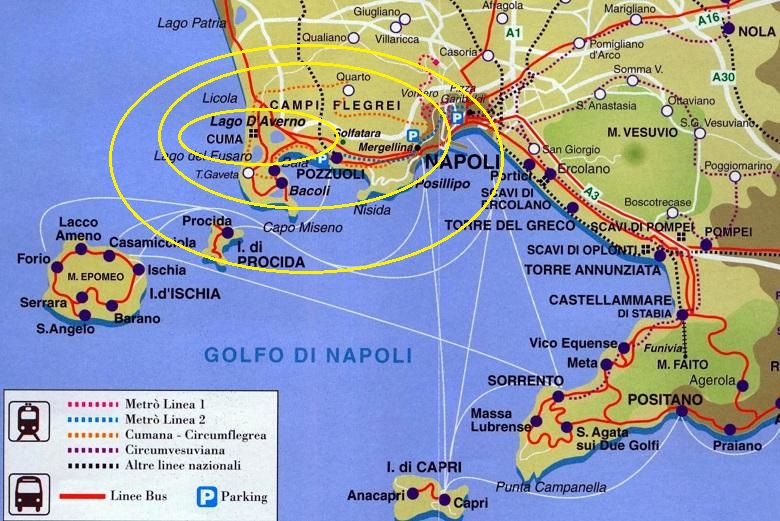 Cuma with its magnificent Acropolis perched on a high crag by the sea was founded by the Chalcis of Euboea (Greek islands of Euboea and Skyros) around 730 B.C. who were already established at Pithecusae (modern Ischia Island) .
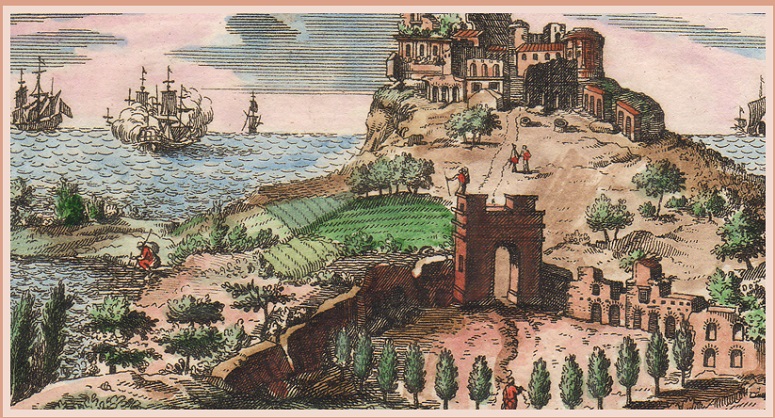 The volcanic nature of the zone is immediately obvious in the widespread presence of tuff, pumice, geysers of scorching steam and the craters that form natural amphitheaters.
Some craters have become lakes like Averno, Lucrino, Fusaro and Miseno. 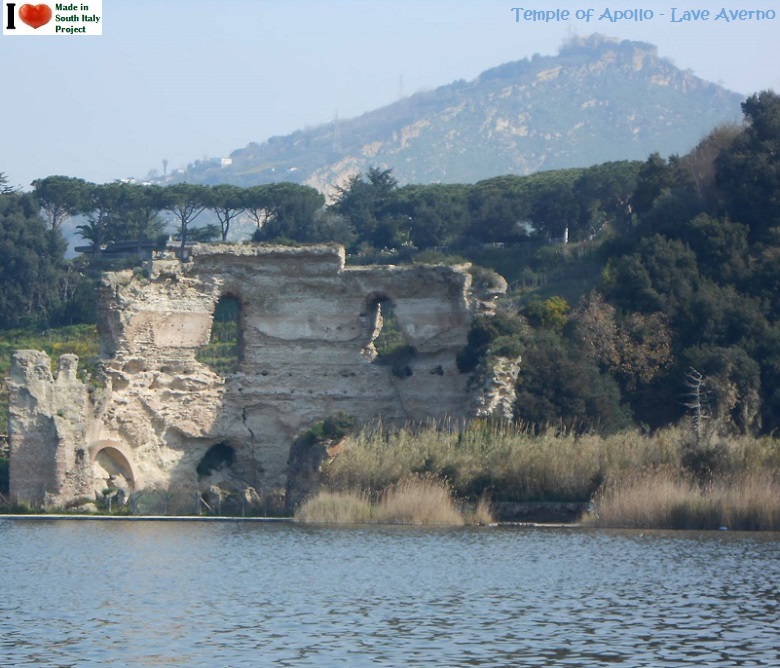 Active volcanic phenomena are visible close-up, like in the famous Solfatara with its lake of lava, and the thermal springs of Agnano.
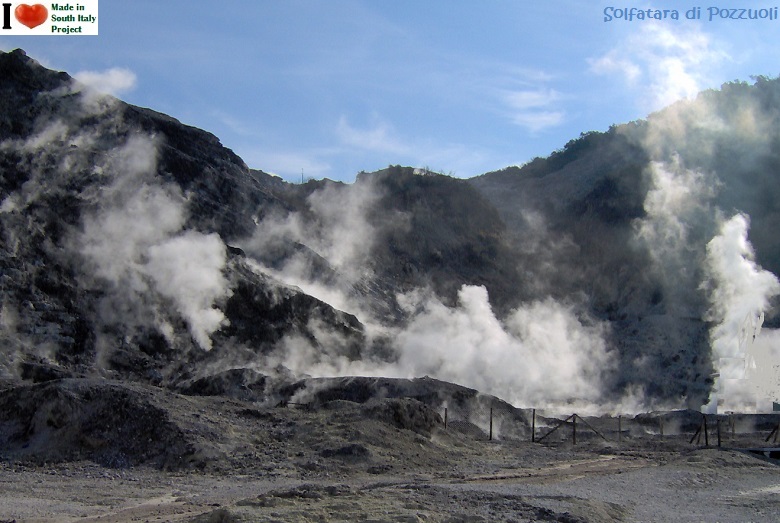 The new city was also the seat of the Cumaean Sibyl, the priestess who was presiding over the Apollonian oracle.
Entrance to the Cave of the Cumaean Sybil.
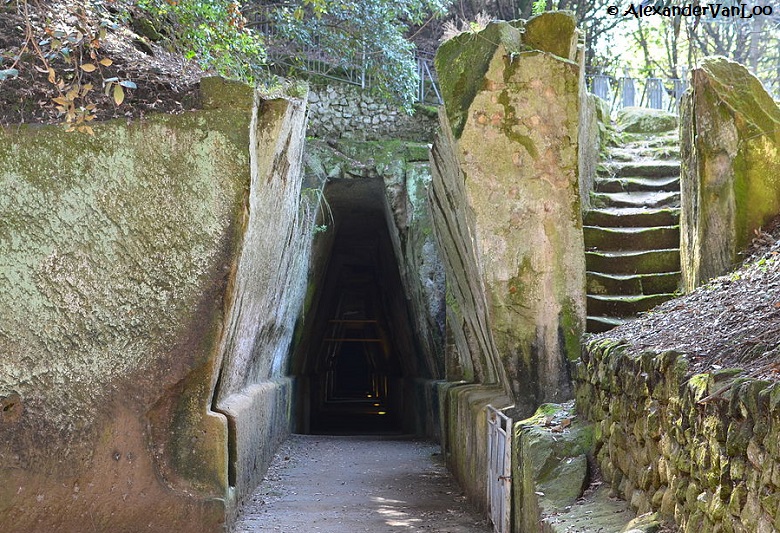 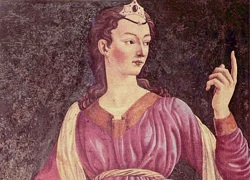
The Sibyls were oracular women believed to possess prophetic powers in ancient Greece.
There were many sibyls in different locations throughout the ancient world. Because of the importance of the Cumaean Sibyl in the legends of early Rome as codified in Virgil's Aeneid VI, and because of her proximity to Rome, the Cumaean Sibyl became the most famous among the Romans.
The Sybil used to predict the future to sailors and travelers in the famous cript at the base of the promontory of the Acropolis by “singing the fates” and writing on oak leaves.
These would be arranged inside the entrance of her cave but, if the wind blew and scattered them, she would not help to reassemble the leaves to form the original prophecy again. In the Phlegreian Fields mythology has also placed the entrance to the “Hades” , the so called Netherworld. 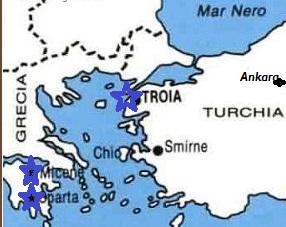
History and Legends : Cuma is intimately tied to the myth of the Sibyl of Cumae and the Roman Empire.
We learn from the fourth book of the Aeneid that following the destruction of Troy (the city was located in modern-day Turkey near the Dardanelles) at the hands of the Greek Achaeans, Aeneas Prince of Troy was to consult with the priestess Sibyl if he wanted to learn the destiny of his people.
Legend has that Aeneas led the surviving Trojans to Sicily where there were already Greek colonies and eventually he proceeded to Campania where he meet the Sibyl of Cuma. 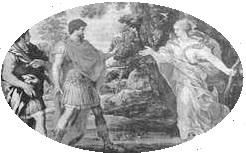
The Sibyl was his guide to the underworld and both entered the "land of the shadows" whose entrance was located at Avernus (nearby Lake Averno) and where Aeneas was given advice from the dead of the past, including his father Anchises.
He then led his people further north (Lazio region) outside the sphere of influence of Magna Graecia where he meet and married Lavinia, daughter of King Latinus and Amata and they founded the city of Lavinium (in name of the wife) and governed over the Latin and the Trojan people.
The old terracotta statue is one of the most beautiful images of classical antiquity, one that shows Aeneas fleeing burning Troy with his father Anchises on his shoulders while holding his little son's (Ascanio) hand: The statue symbolizes the responsibility to carry on with traditions and the burden to protect the future. 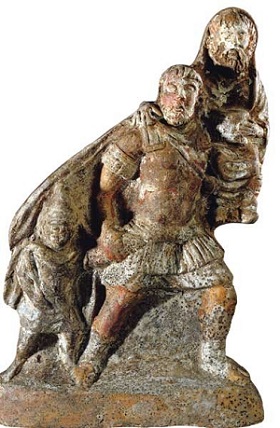 His son Ascanius, or Iulo, founded Alba Longa (modern day Albalonga, 20 km from Rome) starting the new dynasties profetised to Aeneas by Fate during his visit to the underworld. His son Ascanius, or Iulo, founded Alba Longa (modern day Albalonga, 20 km from Rome) starting the new dynasties profetised to Aeneas by Fate during his visit to the underworld.The revenge of the Trojan prince.
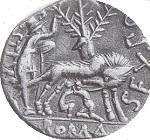 A few centuries later Romolo and Remo descendants of Aeneas the Trojan, founded Rome.
The Romans defeated the Greeks, took over Magna Graecia (South Italy) and gave start to the Roman Empire...so the legend goes. The colony came under Roman rule and in 338 was granted partial citizenship. Under the Romans the city enjoyed a relative period of calm until the disasters of the Gothic Wars (535 - 554). Belisarius (a general of the Byzantine Empire) took it in 536, it was then conquered and ravaged by the Saracens in 915 becoming a pirate cove. It was definitely destroyed in 1207 by the Neapolitan army of Godfrey of Montefusco who decided to put an end to pirate raids once for all. During the Roman empire the region became very famous among emperors and Roman patricians who built here their own sumptuous dwellings along the coastline. According to Suetonius the entire bay of Pozzuoli and the Bay of Naples as well, were flanked by amazing villas, where the patriciate used to spend the holidays and where everyone enjoyed the tasty wines produced into this very fertile land. 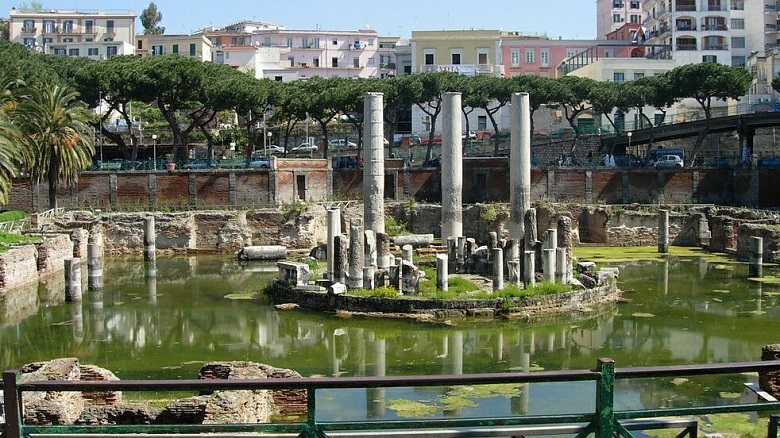 - EXCURSION - The tour starts from Pozzuoli where we will visit the Amphitheatre, which is considered to be the 3rd largest arena of the Roman time and the Macellum, also known as the Serapeo.
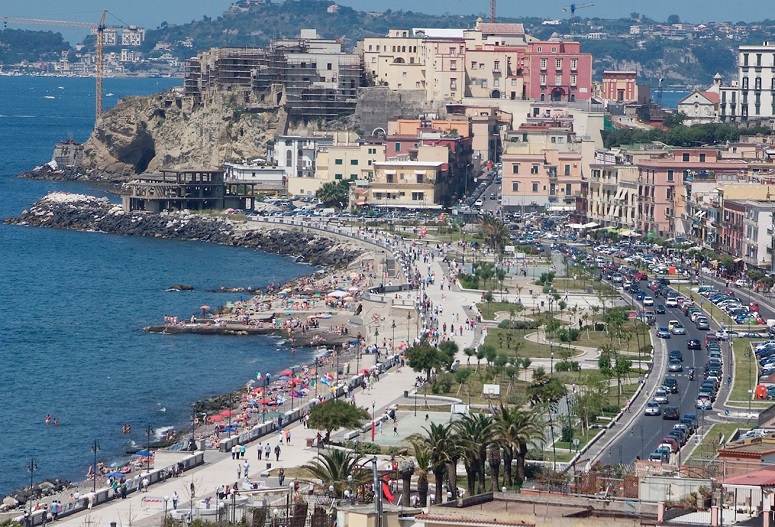 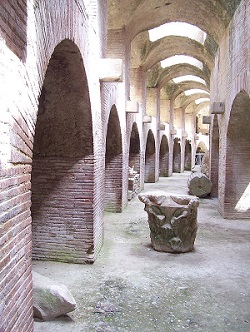 The Flavian Amphitheater is the third largest Roman amphitheater in Italy. The Flavian Amphitheater is the third largest Roman amphitheater in Italy.Only the Roman Colosseum and the Capuan Amphitheater are larger. It was likely built by the same architects who previously constructed the Roman Colosseum. The name Flavian Amphitheater is primarily associated with the Roman Colosseum. It was begun under the reign of the emperor Vespasian and probably finished under the reign of his son Titus. The arena can hold up to 20,000 spectators. The interior is mostly intact and one can still see parts of gears which were used to lift cages up to the arena floor. 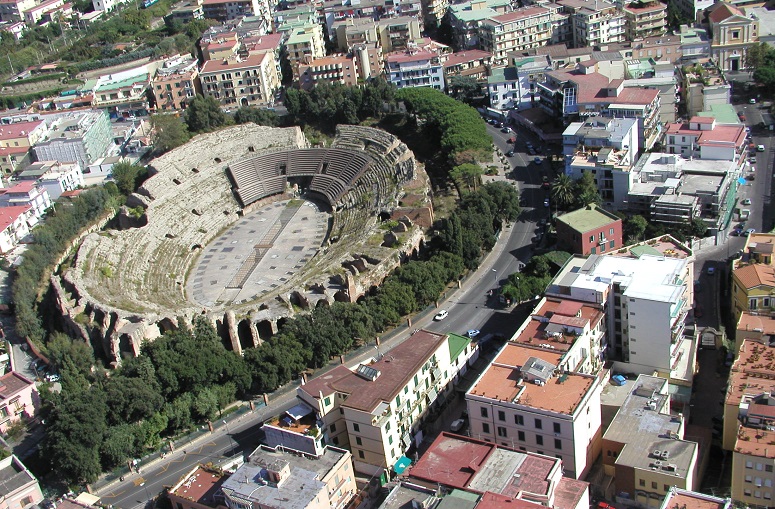 Macellum - This complex was originally confused with the temple dedicated to Serapis, but further investigations made archeologist understand that it was, in reality, the most important market in the area. Many products were dispatched from this market towards other Mediterraean harbours and Puteoli was renowned as the major commercial centre of the Italian peninsula. The actual port of Pozzuoli is still very famous for its fish market.
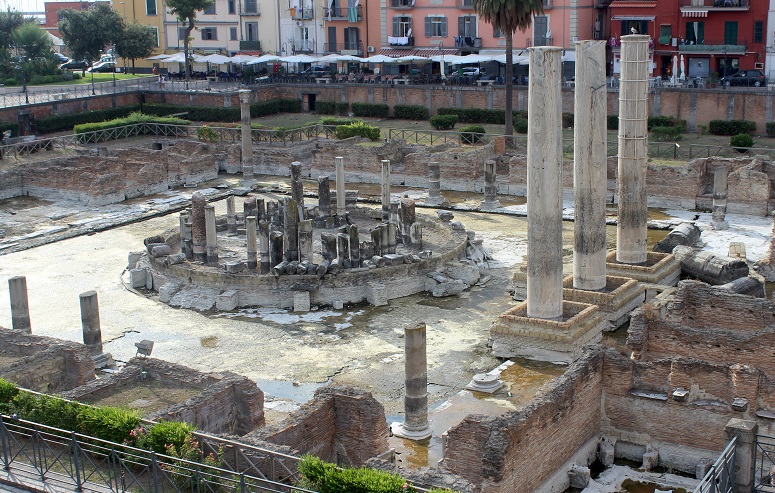 From Pozzuoli we will move towards Bacoli where we will see externally the Casina Vanvitelliana, a nice building which stands in the middle of the water of the Fusaro lake.
It is reachable through a wooden bridge built during the 18th century. This little amusing dwelling was built by Luigi Vanvitelli, the most important architect of the 18th century and it was used by the Bourbon kings when they decided to go hunting. 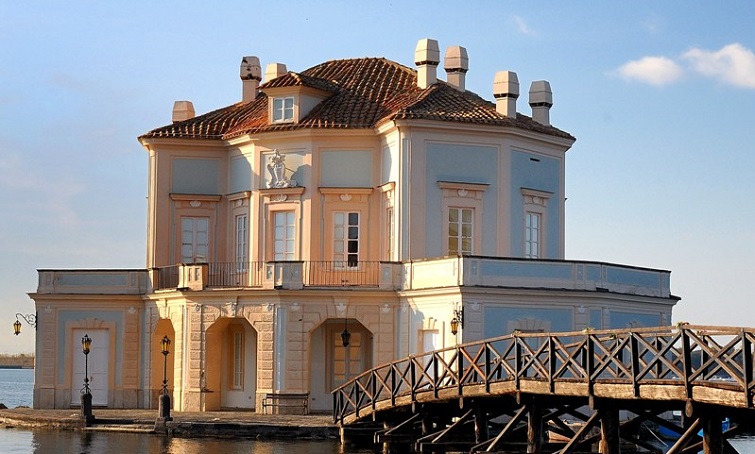 Continuing our tour we will head towards the ancient town of Cuma, where we will visit its archaeological site. This is a very complex archaeological place as there are the remains of the Greek time, located on the promontory, and the Samnites and Roman area at the base of the hill.
The first place we meet, soon after the entrance, is the extraordinary Sybil's Cave, a trapezoidal tunnel, where a series of openings let a striking light penetrate into its interiors. A real magic place. 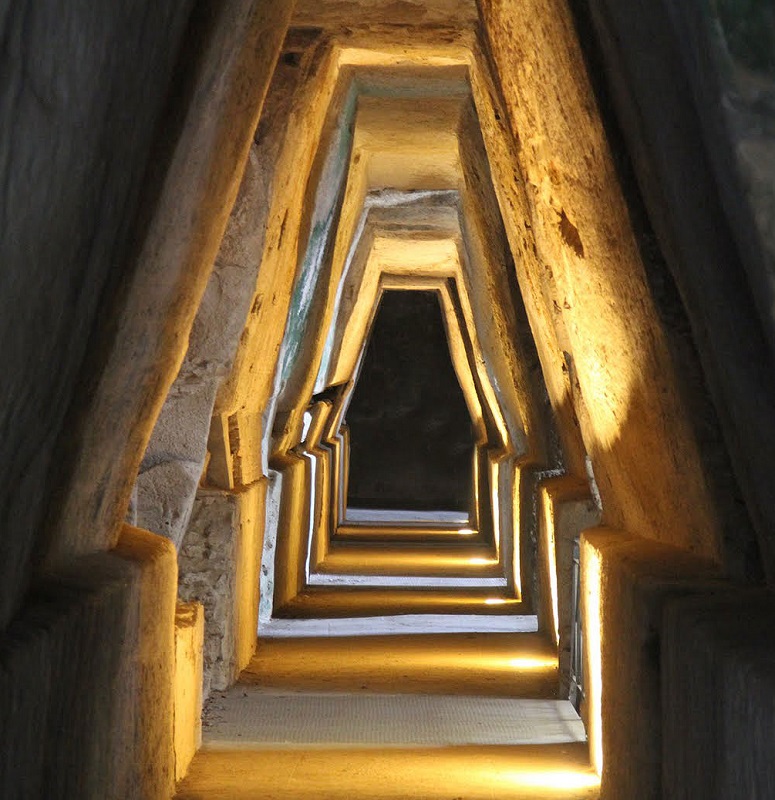 The road rises towards the highest area of the site, from which the view on the entire bay and the Phlaegreian Fields is fantastic.
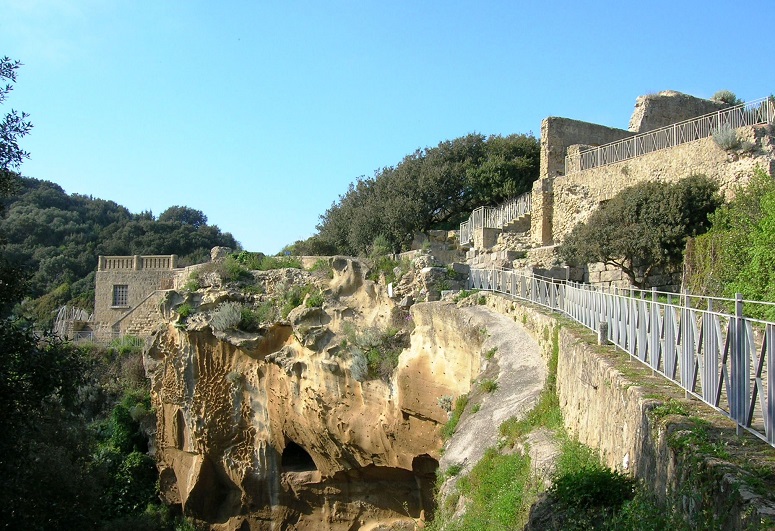 Here the remains of the temple dedicated to Jupiter stands, together with those of the temple of Apollo and Dedalus, who, according to the legend, managed to land here while Icarus went too close to the sun and lost his life.
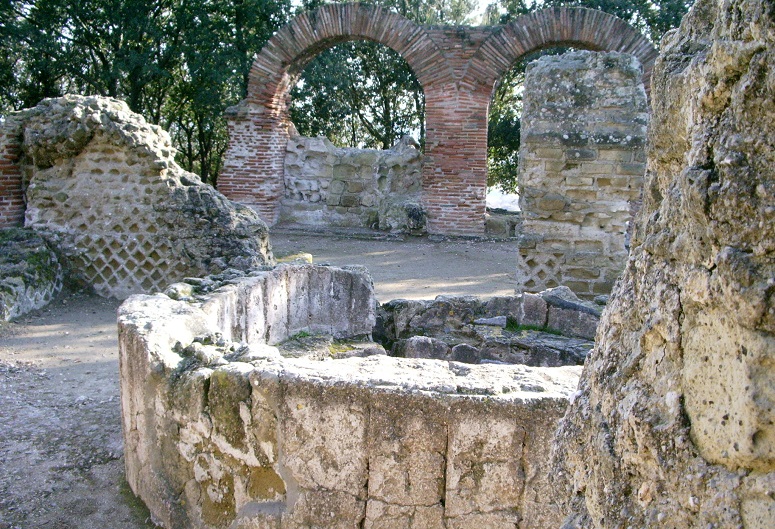 Descending the promontory, we will meet the Roman settlement, where we will see a spa of the Republican time, shops and streets of that era.
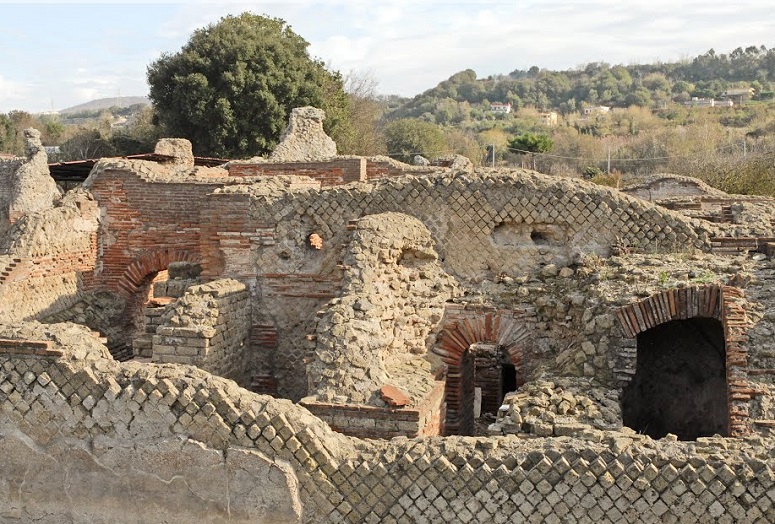 After lunch, on the way back, we will visit Baia archaeological complex with its spa park perched on a hill which was once close to the sea.
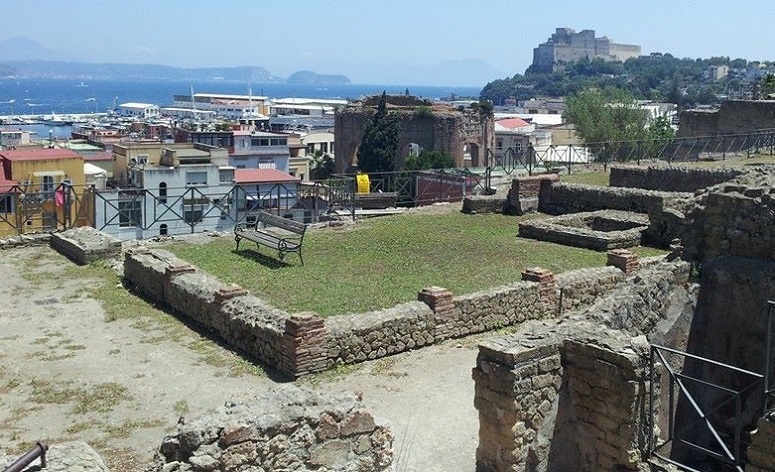 The huge dome shaped thermal bath, known as Mercurio's Spa, can be considered the precursor of the Pantheon in Rome. It is a very large cave where the water penetrates through subterranean tunnels.
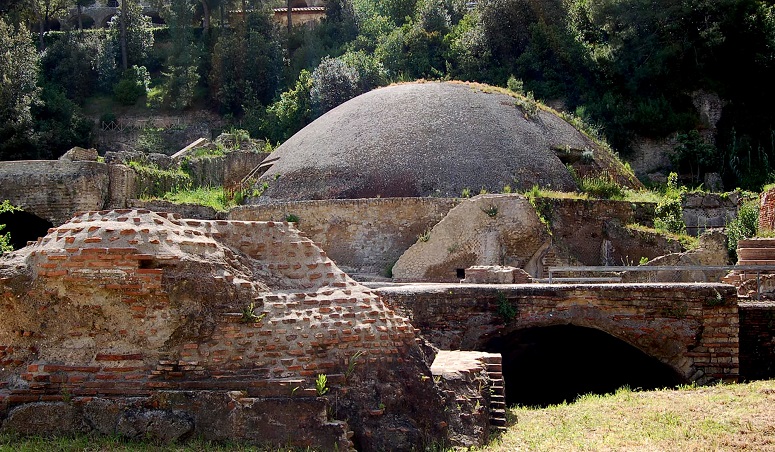 The Sosandra spa, instead, are developed across terraces with a spectacular view on the bay.
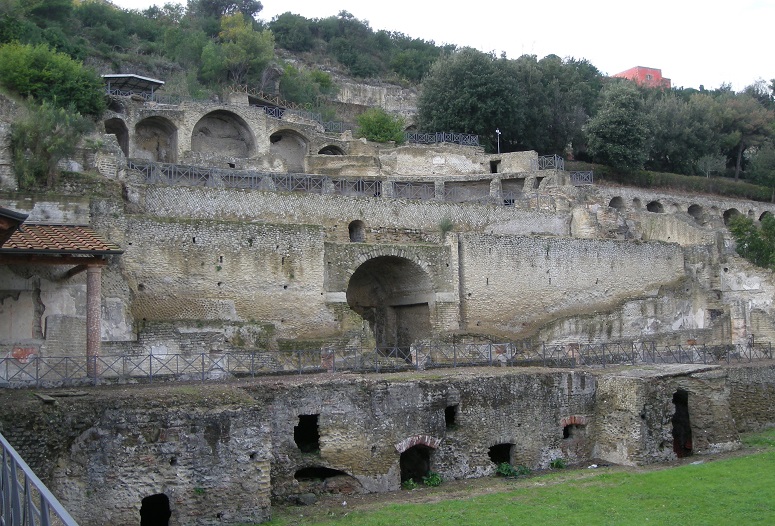 After the visit of this astonishing thermal bath complex, the Phlaegreian Fields Museum hosted inside the Aragonese Castle is worth a visit.
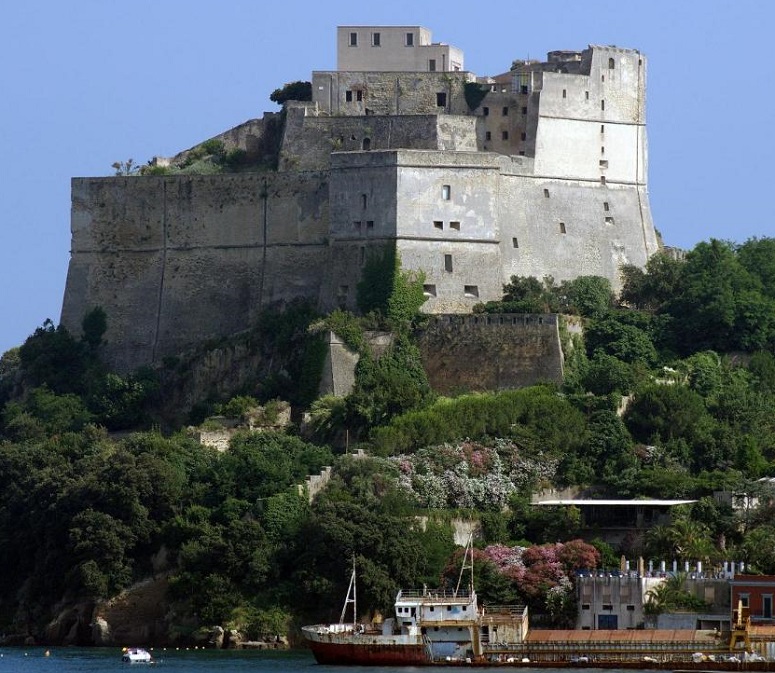 Here many artifacts detached mostly from the submerged cities of Miseno and Baia, are displayed in the numerous rooms of the castle.
The building is placed on a crag by the sea and from its terraces the view on the bay, with the Vesuvius in the background, is really striking... End of the tour...Are you planning tours in Herculaneum, Pompeii, Capri island, Sorrento peninsula, Amalfi coast, Naples and other tourist spots in Campania, South Italy?.. ~ YOUR GUIDE ~
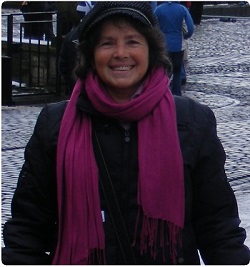
Discover and experience the distinctive cultures, traditions and landscapes of Southern Italy with those who know better.
Maria was born and lives near Naples , in the ancient town of Ercolano allegedly founded by Hercules on the way back from one of his Twelve Labours. Maria is a long time certified tourist guide with a degree in Foreign Languages . She is fluent in English, Japanese and Spanish and will gladly answer any question you might have pertaining your travel to this mystical land of ours. Whatever your reason is for coming to Campania, you can rest assured that you'll find exactly what you are looking for and so much more. Any special request? Let her know. Contact : belsannino@gmail.com,  |
Our guided tours are as varied as the continent itself, from a hiking adventure on the Vesuvio
to an action-packed family stay at the beach or simply...a drive along the Amalfi coast .
to an action-packed family stay at the beach or simply...a drive along the Amalfi coast .
La vetrina ideale per promuovere i vostri prodotti e servizi sul mercato Nord Americano ma che potrebbe essere un punto di visibilità anche nei vari mercati internazionali.
AZIENDE - PRODUTTORI - STRUTTURE RICETTIVE - GUIDE TURISTICHE - TOUR OPERATORI
Ai nostri visitatori piace il Sud Italia, vuoi dire loro qualcosa?
Il nostro obiettivo e' quello di promuovere prodotti tipici del Sud in un contesto di marketing globale, e allo stesso tempo proporre
il nostro Meridione come alternativa turistica, ben consapevoli che il successo dell'uno è essenziale per il successo dell'altro.
Paesi di provenienza dei visitatori in ordine numerico
Stati Uniti - Canada - Italia - Gran Bretagna - Australia - China - Germania - Francia - Nuova Zelanda - Olanda
Coloro interessati ad inserire la loro attivita'/azienda/ nel sito
sono pregati di mettersi in contatto usando il modulo sottostante .
Per saperne di piu'...
| WHERE WOULD YOU LIKE TO GO?...suggested links.. | ||
| HOME Top of the page Abruzzo Molise Campania Basilicata Apulia Calabria Sicilia Sardegna |
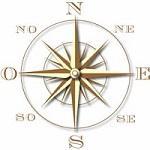 |
|
|
Find out more about Maria and how she can help you.
Made in South Italy Today.com-2014-Hamilton-Ontario-Canada |||||||| CMS by AlboDigital |||||||| Copyrights issues   |
||
